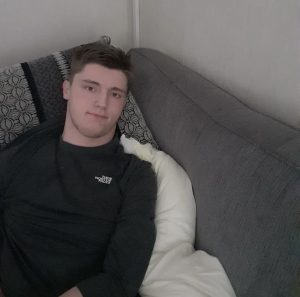


Dystonia is a neurological movement disorder that causes uncontrollable muscle spasms which can be extremely painful for some. Dystonia is estimated to affect 100,000 people in the UK, and there is no cure.
To recognise Dystonia Awareness Week 2022, we asked friends of Leigh Network to share their stories.
Faye’s Story:
“To look at me, you wouldn’t know what goes on inside my body.

There are, I think different levels of a dystonic flare up it can begin with a shoulder twitch that only I feel. This can lead to my arms and hands trembling, fist clenching so tight, it has to be prised open. It can be embarrassing as I can struggle to pick up a spoon or glass, or tablet. My legs are most affected. A lot of the time, it feels like a vice like grip is shaking my calves, making the muscle do the opposite of what I want, it’s like the muscles are playing tug, arguing. It causes my legs to shake and stiffen. When I walk, I have to concentrate to get my heel to the floor. After a while of toe walking, it aches in my knees and there are pains in my legs. Sometimes, my face is affected too. My jaw contorts into a frightening grimace.
This and the hands are probably the most embarrassing aspects of dystonia to deal with. I’m sure everyone has different triggers, mine are extreme temperatures and emotions. E.g., a hot bath can cause an immediate reaction, and my leg will then shoot up and not move. I have to forcibly push it down. The after affects are that my muscles feel heavy, delicate and floppy with fatigue, my brain can’t think and its like swimming through sludge.
I take baclofen, which is a muscle relaxant.
Dystonia, for me, is worse at night.”
James’ Story:
James suffers with four limb motor dystonia.
“It makes his life difficult and painful as his hands and feet turn inwards uncontrollably and often cramp causing pain. This twisting movement is caused by involuntary muscle contractions forcing his hands and feet into painful and abnormal positions.
As his hands turn in and he can’t properly grip, James can no longer hold a pen to write his name or use cutlery to feed himself. He needs help with everyday tasks such as washing, cleaning his teeth, getting dressed and so on. He finds it very frustrating but always has a go at helping himself with varying results.
James has to wear AFOs (splints) which are made from made-to-measure moulds which encase his feet and ankles and are secured with straps and Velcro to hold his feet in a comfortable and supporting posture. Sadly James can no longer walk unaided and so the AFOs help to support his growing bones.
Dystonia can be extremely painful and we’ve had times in the past when James would cry out in pain night after night when his legs went into spasms which was absolutely heartbreaking. Now though, after much trial and error, he takes a medicine called Trihexyphenidyl twice a day and this has really helped the pain. His hands and feet still twist and turn in ways they shouldn’t and he gets cramps but the pain isn’t as extreme.
Physiotherapy, stretching out on the floor, swimming and the medication mentioned all help James in managing the symptoms.”
Sarah’s son James’ story:
“Sadly, James had progressive generalised dystonia with no known cause.
He passed away 5 weeks ago. He had this secondary to aspiration pneumonia. James was diagnosed at 16. From that time, James had around 15 aspiration pneumonia, 3 sepsis covid. He also had deep brain stimulation with no affect. This condition took James’ quality of life.
I hope a cure is found for this, as in very extreme cases, dystonia can take lives.”
Thank you to Faye, James and Sarah for sharing their stories they help us to raise awareness of these debilitating conditions and also allow others not to feel alone.
To can find out more information about dystonia and how you can help
here.







